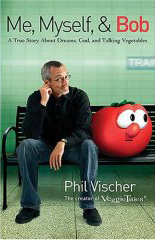
Cory Brown via Compfight
It’s crazy!
4 times this week I’ve been approached for my brain!
I’ve heard things like, “You’ve done a great job strategizing and promoting so-in-so, and I don’t know what I’m doing. I’d like to ________ (be a published author, sell my ebook, get speaking gigs, create a following, etc.)”
So I thought maybe instead of giving the info out time and again I could create a post with strategy tips to get you started if you fall into that category, too.
If you’re a musician, expert, artist, writer, speaker or whatever…it’s harder than ever to get noticed and build a following of those who will want what you have to offer.
It’s the problem of TOO MANY OPTIONS. (It’s paralyzing)
Most publishers, for instance, won’t even look at your stuff without an agent. They have cut their staffs and gone with sure-bets, like celebrities who hire ghostwriters. (I’m contractually obligated to avoid specifics on that bit.) But, you know what ? Agents want sure-bets too. You’re stuck researching and writing endless proposals to prove you are a good bet that just get rejected after all the hard work most of the time.
It’s even worse if you don’t know your way around a blog, promotion, social media, or ways to integrate what you are doing with the right people. You get stalled!
In the end, making something great is only half the battle.
You have to execute. As Seth Godin says, “You have to ship.”
I’ve found that great “crafts-people” (think good at a certain field: experts, academics, talented artists, experts, artisan, inventors, writers, signers, etc) often lack in the area of marketing themselves well and creating connections that pay off. They do something great, but don’t have the lateral thinking prowess outside their niche to know how to get it sold or stake their claim in their field.
As one person put it, “I’m an academic. I stay in my study and write and hope someone magically wants to read it.”
Well, that won’t work, of course. Others have to know about you to realize that you are amazing.
It’s hard to be good at both craft and marketing / connecting, but those are the people who really make it. Or the people who make it know how to delegate properly for what they aren’t expert in. That’s a KEY point. (Keep that nugget. it’s free.) :) You just can’t do it all.
Here’s the hopeful part!
Even if your aren’t a celebrity or infamous or have someone huge to vouch for you to land a deal, there is a lot you can do to generate buzz, especial if you can mobilize your fans/audience that already trust you. It the wilderness route, but with a little bit of $ and lots of hard work (a.k.a. “bootstrapping”) it can make a dent.
Through bootstrapping and almost no money I get 100,000 visitors. That’s nice and all, but it’s not as fun as helping others realize their goals and dreams.
So, I want to help. This below is some of what I’ve been telling other people as they get started.
Get a piece of paper! (seriously)
If you have something you want to share and make a name for yourself, or you want to start getting compensated for your goods, services, or talents be prepared to answer these questions specifically:
(yes, on paper or in a digital document, right now)
1. Who is your audience and how many people would buy the book (or service or product) from you *right now*?
2. What is your budget for marketing and promotion? (This of course will determine how much can be done.) You shouldn’t go forward if you can’t spend $500 – 1,000 to get the ball rolling. If you don’t have the money, you should save and do a bunch of leg work first on your own. Again, with the bootstrapping.
(This means you have to put what you love to do on hold, or hire out help.)
3. What are you doing already to promote what you have, if anything (website? Facebook page or group? speaking? workshops? readings at the library? church groups? MOPS? social media accounts? gathering an email list of fans?) (Be able to show what, if anything is already being done so it can be can ramped it up, or started if it hasn’t been.)
And what could you do, if you started? (write it down)
4. What connections do you have or people do you know who would help you get the word out? colleagues? teachers? librarians? leaders? church folks? groups, camps, and clubs? anyone famous or well connected (like to Focus on the Family, for example? ) People in tv, radio, bloggers, local newspapers, or journalists and writers to feature you?
5. What can you offer for free to build trust and gain a following?
That’s it!
…But, sometimes it’s overwhelming! If you’ve haven’t thought to ask these questions, you fall into the category of craft-person more that of “marketer” or “promotion and communications guru”…and that’s fine, but you’ll need help.
I can help. Contact me!






